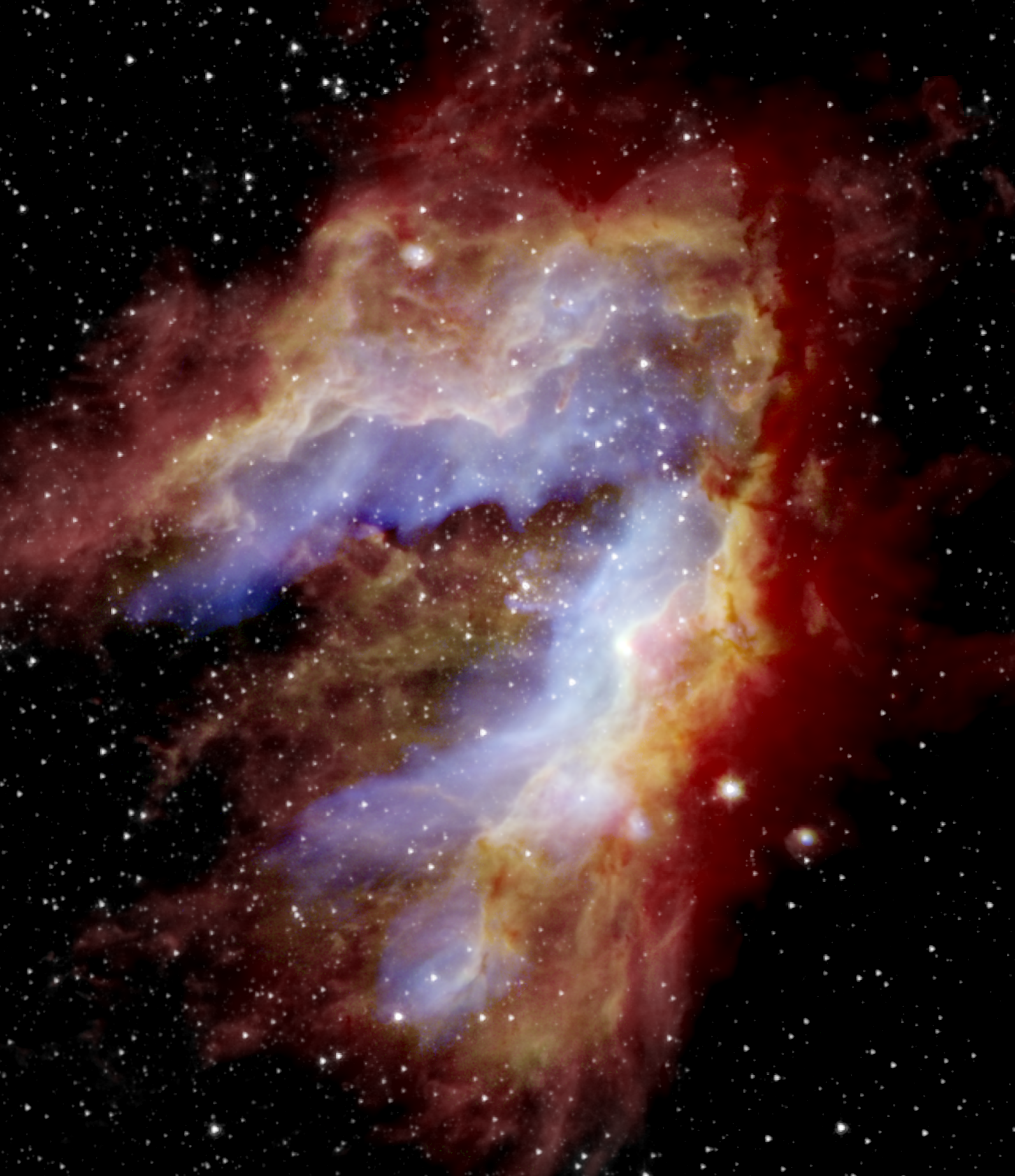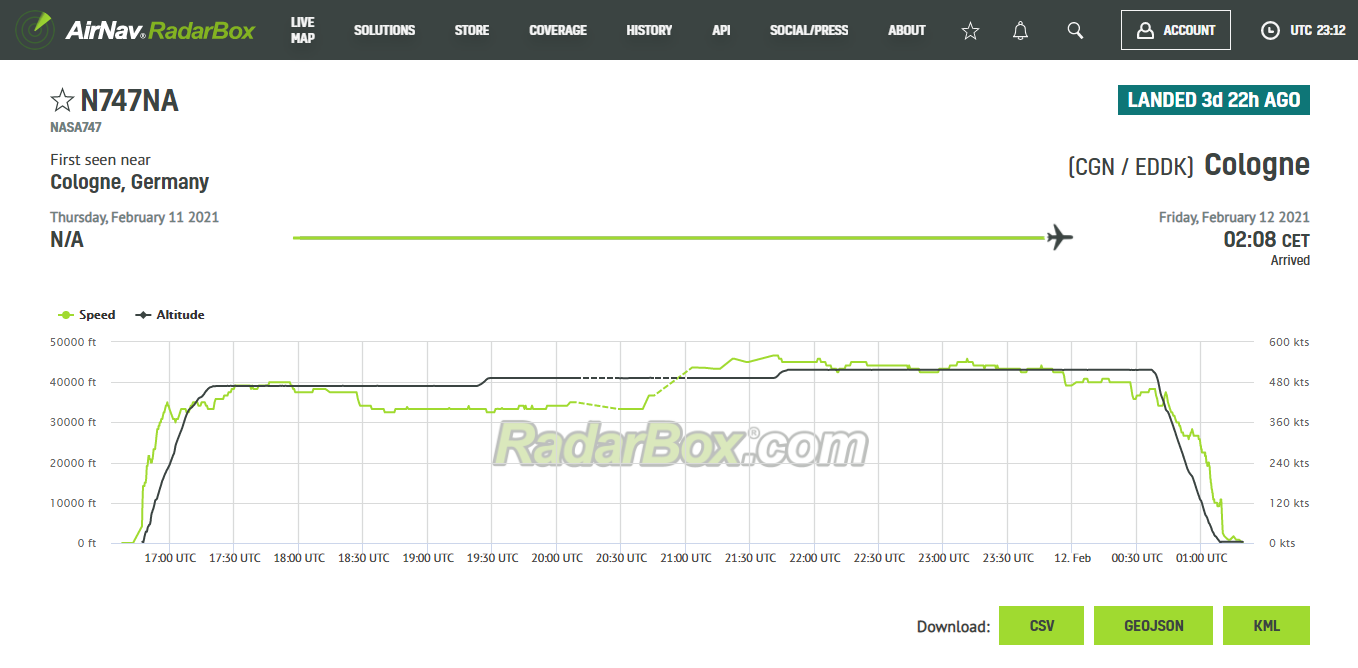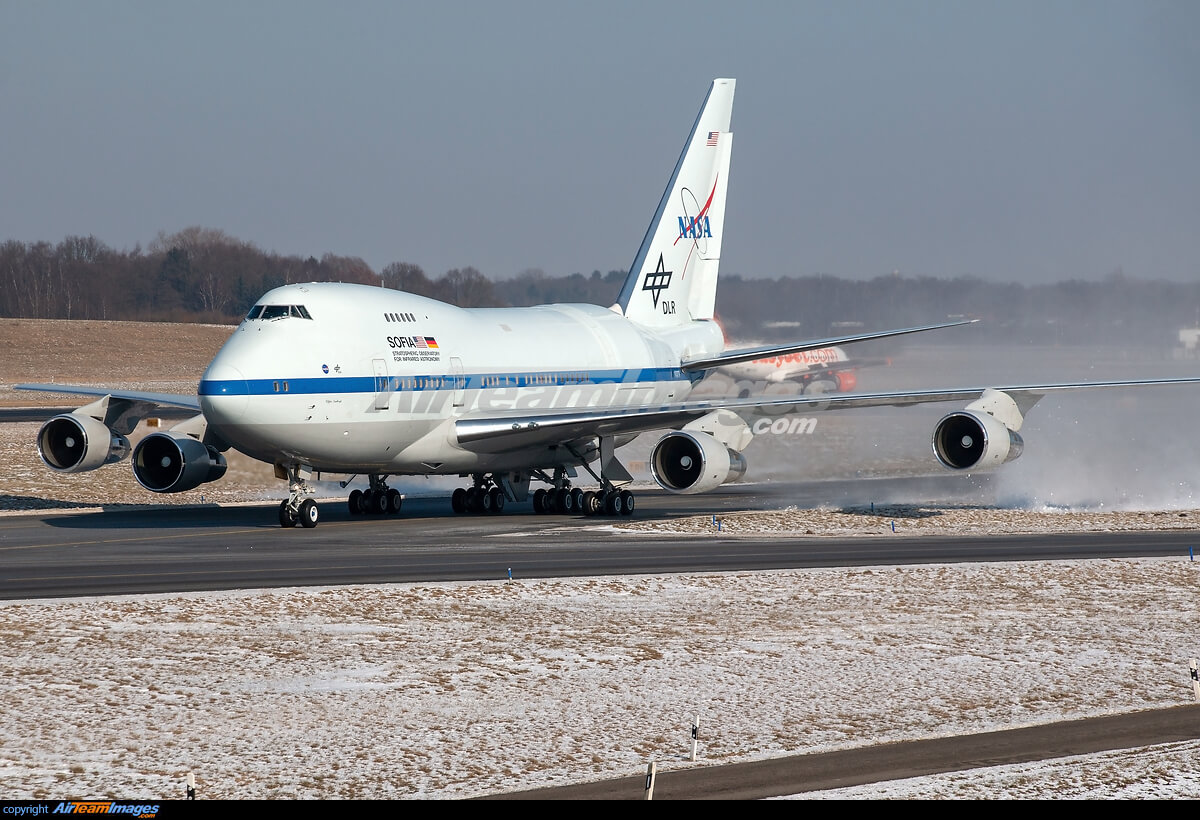Sofia: The flying telescope
The Boeing 747SP is a shortened version of the Jumbo, designed to be a mixed aircraft of large capacity and ultra-long range. Few specimens were built and seeing one of them today is an arduous task. However, one of them is carrying out much more special missions: SOFIA.
SOFIA is the acronym that NASA created for Stratospheric Observatory for Infrared Astronomy. To turn the jumbo into a flying observatory, the agency enlisted the help of Raytheon, a leading Virginia-based intelligence and intelligence company, and a partnership with the German government.
From its external appearance, NASA's Boeing 747 looks much like any other. But just look at the rear of the fuselage to notice one of the main changes made to the quad-jet: the 5.5 meter high by 4.1 meter wide sliding door, which opens during the flight.

Source: NASA/Jim Ross
When the door is opened, a 17-ton infrared telescope appears in its fuselage, which is affixed behind a pressurized bulkhead. Obviously, this mechanism was built in this way to keep the interior of the aircraft pressurized, for the comfort of scientists on board.
The Stratospheric Observatory of Infrared Astronomy is the successor to Kuiper, NASA's former flying observatory, which was retired in 1995. Like the Kuiper, SOFIA was created to carry out studies based on infrared astronomy in flight, something that is almost impossible to do from the ground due to water vapor in the atmosphere.
Before becoming the Sofia telescope, the plane was operated under the Christian name “Clipper Lindbergh”, the plane prefix N536PA, flew for nine years in the colors of Panam, the largest and most important American airline of its time, before to be acquired by United Airlines, where it stayed until October 1997.
When it crosses about 40,000 to 45,000 feet, the plane flies above that vapor, allowing crisp and clear images of space, as seen in the infrared spectrum. The telescope on board the 747SP is a 2.5 m reflecting telescope, with a 2.7 m primary mirror and cutting edge image quality.
SOFIA's goal is to provide observations of space never seen before. Unlike space telescopes, which go into orbit to never return, SOFIA has the advantage of being back on the ground at the end of each mission. This means that, throughout its useful life, the aircraft may have updates and improvements to its on-board equipment.
To name a few achievements, SOFIA has unveiled unpublished images of what NASA calls a ‘star factory’. The Swan Nebula, located about 5,000 light years from Earth, is thought to be the nucleus of the Milky Way, and was observed in infrared colors and in surprising detail, thanks to SOFIA.

But it is necessary to remember that the majestic Boeing 747SP that gives life to this incredible project is reaching its 43 years of career. With that, NASA already expects that its useful life is near the end. In fact, it is expected to fly until the early 2030s, when it will have more than half a century of services provided. Until then, the American agency plans to operate about 100 observation flights a year, each lasting eight to 10 hours.
N747NA (SOFIA) flight on RadarBox:
https://www.radarbox.com/data/registration/N747NA

Flight from Cologne, Germany to the Atlantic Ocean and back to Germany. According to reports, SOFIA was conducting astronomical observations.
N747NA (SOFIA) track log:

Download the SOFIA flight track log in CSV, GEOJSON and KML on our website:
https://www.radarbox.com/data/registration/N747NA/1532733099/log
READ NEXT...
 3480
3480Tracking SOFIA, the flying telescope
SOFIA, a modified Boeing 747SP with a giant telescope, often known as the "Flying Telescope," is tracked weekly by RadarBox on its observations flights over North America and Europe. Read our blog to learn about more SOFIA and how to track it on RadarBox apps and website! 2790
2790NASA's Flying Observatory 747 SOFIA first research flight over Europe to study black holes
The unique airborne space observatory is performing its first scientific flight over Europe. Its mission is to study activity around a pair of co-orbiting black holes about 600 million light-years away from Earth. 1830
1830Tracking NASA and DLR's SOFIA
Read our blog to learn about more SOFIA and how to track it on RadarBox apps and website!
